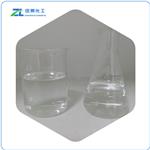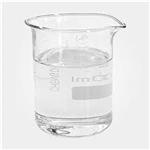Description
n-Hendecane, also known as Undecane and Hendecane, is a component of petrol. It is used as a solvent and degreaser for inks as well as in organic synthesis. Due to its low phase transition temperature (-26 °C), it is also used as a core material for microcapsules in cold chain transport.
Chemical Properties
colourless liquid.
Uses
Undecane is used in preparation method of small-size hollow Silicon Dioxide.
Uses
Petroleum research, organic synthesis, distillation
chaser.
Uses
Undecane is mainly used as a model
n-alkane in studies relating to viscosities, excess molar enthalpies and vapor-liquid equilibrium of binary alkane mixtures.
Production Methods
Undecane is obtained from the refining of petroleum.
Paraffins are isolated by selective adsorption followed
by fractional distillation to produce the desired mix of nparaffins
(63).
Definition
ChEBI: Undecane is a straight-chain alkane with 11 carbon atoms.
Synthesis Reference(s)
Journal of the American Chemical Society, 95, p. 6131, 1973
DOI: 10.1021/ja00799a058The Journal of Organic Chemistry, 50, p. 3082, 1985
General Description
A colorless liquid. Insoluble in water and less dense than water. Flash point 130°F. Used to make other chemicals.
Air & Water Reactions
Flammable. Insoluble in water.
Reactivity Profile
Saturated aliphatic hydrocarbons, such as n-Hendecane, may be incompatible with strong oxidizing agents like nitric acid. Charring of the hydrocarbon may occur followed by ignition of unreacted hydrocarbon and other nearby combustibles. In other settings, aliphatic saturated hydrocarbons are mostly unreactive. They are not affected by aqueous solutions of acids, alkalis, most oxidizing agents, and most reducing agents.
Health Hazard
Inhalation or contact with material may irritate or burn skin and eyes. Fire may produce irritating, corrosive and/or toxic gases. Vapors may cause dizziness or suffocation. Runoff from fire control or dilution water may cause pollution.
Safety Profile
Moderately toxic by
intravenous route. Flammable liquid when
exposed to heat, sparks, flame, or oxidizers.To fight fire, use foam, mist, dry chemical.
Emitted from modern buildmg materials
(CENEAR 69,22,91). When heated to
decomposition it emits acrid smoke and
irritating fumes. See also ALKANES.
Carcinogenicity
Undecane (25 mg) and benzo[a]
pyrene (B[a]P) (5 mg) were applied to the skin of female ICR/
Ha Swiss mice for 3/week for 440 days, inducing papillomas
in 41 of 50 animals. B[a]P alone induced tumors in 12 of 50
animals in the same time, while undecane alone did not
produce tumors.





